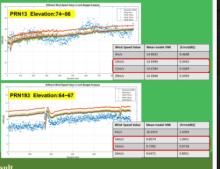Performance Assessment of Airborne GNSS Reflectometry Experiments for Triton Satellite Mission
Yung-Fu
Tsai
National Space Organization, HsinChu, Taiwan
Poster
Beyond the functionality of navigation, GPS/ Global Navigation Satellite System (GNSS) is facilitated many remote sensing missions, such as GNSS radio occultation (GNSS-RO) and GNSS reflectometry (GNSS-R). In a GNSS reflectometry mission, the reflected signals are processed to form delay Doppler maps (DDMs) so that the properties including roughness, ocean wind speed, and soil moisture can be retrieved. Recently, GPS reflectometry missions are realized by Surrey TDS-1 and NASA CYGNSS to demonstrate the capability of the GNSS-R technique for the measurement of ocean surface wind speed.
The design and development of National Space Organization (NSPO) in-house built GNSS-R receiver for the upcoming Triton satellite mission would be introduced. One distinguishable feature of the Triton GNSS reflectometry mission is its capability to process both GPS and QZSS reflected signals. In order to verify the design and performance of NSPO in-house built GNSS-R receiver, tests are deemed essential. The airborne tests and data analyses of the GNSS-R receiver are then discussed. The conclusions and updated status of the Triton satellite mission are described in the end.
The design and development of National Space Organization (NSPO) in-house built GNSS-R receiver for the upcoming Triton satellite mission would be introduced. One distinguishable feature of the Triton GNSS reflectometry mission is its capability to process both GPS and QZSS reflected signals. In order to verify the design and performance of NSPO in-house built GNSS-R receiver, tests are deemed essential. The airborne tests and data analyses of the GNSS-R receiver are then discussed. The conclusions and updated status of the Triton satellite mission are described in the end.

Poster PDF